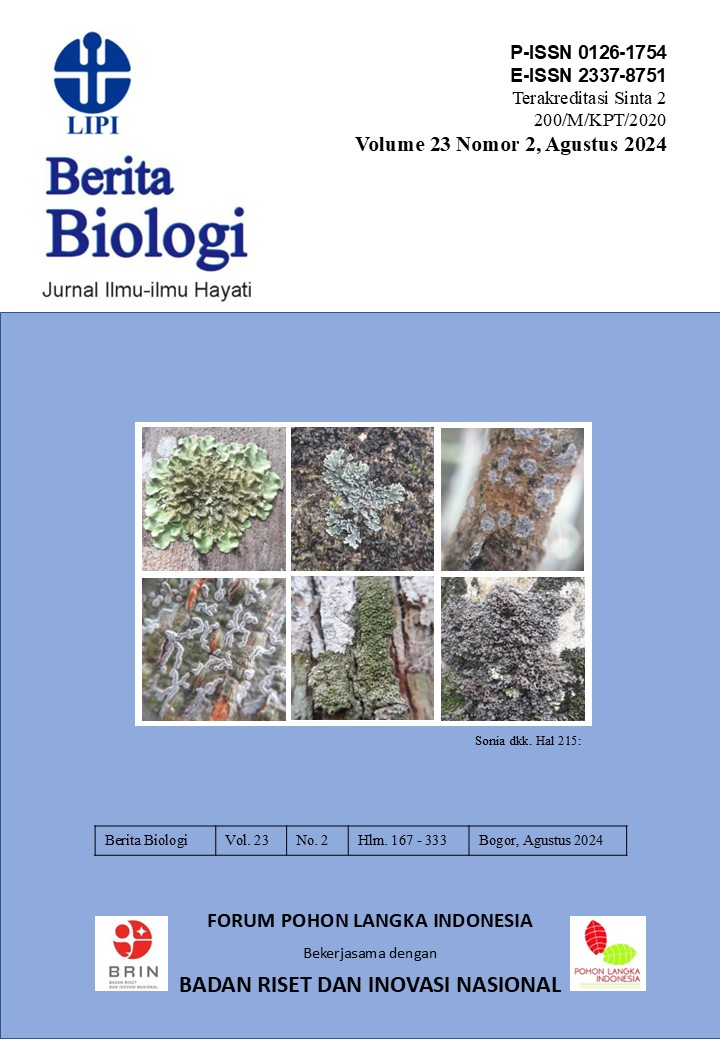INTRODUCTION OF THE SYNBIOTIC OF LACTIC ACID BACTERIA FROM DANGKE AND INULIN DAHLIA IN MICE INFECTED WITH Enteropathogenic Escherichia coli
DOI:
https://doi.org/10.55981/beritabiologi.2024.3733Keywords:
EPEC, Dangke, diarrhea, inulin, lactic acid bacteriaAbstract
This study investigates the influence of synbiotics, a combination of probiotics (lactic acid bacteria) and prebiotics (inulin from Dahlia tubers), on mice infected with Enteropathogenic Escherichia coli (EPEC) bacteria. The performance of mice, including weight gain, feed consumption, and feed conversion ratio, was used as parameters to understand the effect of synbiotics on EPEC-infected mice. Four groups of mice were observed in this study: the control group (P1), EPEC infection group (P2), synbiotics introduction group (P3), and synbiotics introduction + EPEC infection group (P4). The research findings demonstrate that synbiotics from Dangke lactic acid bacteria and inulin from Dahlia tubers have a positive impact on mice performance and help them in countering EPEC infection. Group P3, which received synbiotics without EPEC infection, showed significantly higher weight gain and feed conversion efficiency compared to groups P1 and P2. The synbiotics contributed to the enhancement of mice growth and feed efficiency. On the other hand, group P4, which received synbiotics and was infected with EPEC, exhibited a lower survival rate compared to the control group (P1) and group P3, despite having a shorter duration of diarrhea. EPEC caused diarrhea in mice, but synbiotics helped reduce the duration of diarrhea by inhibiting the growth and attachment of EPEC in the mice's intestines. These findings indicate that synbiotics of Lactic Acid Bacteria and inulin Dahlia have the potential as an alternative strategy to improve mice growth and intestinal health. However, the positive effect of synbiotics may be diminished when mice are infected with EPEC.



